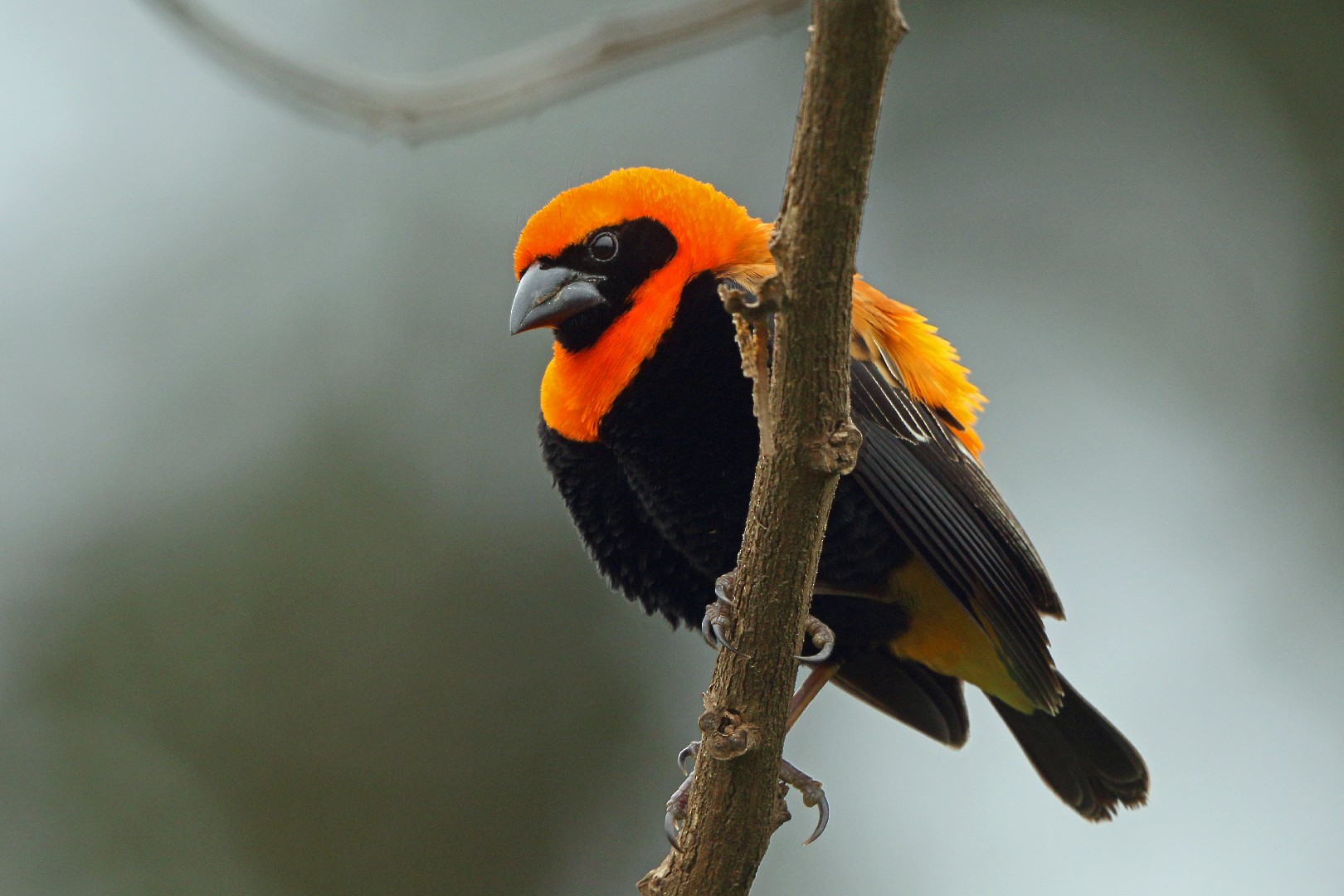Black-winged Red Bishop
A species of Bishops and widowbirds, Also known as Fire-crowned Bishop Scientific name : Euplectes hordeaceus Genus : Bishops and widowbirds
Black-winged Red Bishop, A species of Bishops and widowbirds
Also known as:
Fire-crowned Bishop
Botanical name: Euplectes hordeaceus
Genus: Bishops and widowbirds
Content
Description General Info
 Photo By Nigel Voaden , used under CC-BY-SA-2.0 /Cropped and compressed from original
Photo By Nigel Voaden , used under CC-BY-SA-2.0 /Cropped and compressed from original Description
The black-winged red bishop (Euplectes hordeaceus), formerly known in southern Africa as the fire-crowned bishop, is a resident breeding bird species in tropical Africa from Senegal to Sudan and south to Angola, Tanzania, Zimbabwe and Mozambique. This common weaver occurs in a range of open country, especially tall grassland and often near water. It builds a spherical woven nest in tall grass. 2-4 eggs are laid. The black-winged red bishop is a stocky 13–15 cm bird. The breeding male is scarlet apart from his black face, belly and wings and brown tail. The conical bill is thick and black. He displays prominently, singing high-pitched twitters from tall grass, puffing out his feathers or performing a slow hovering display flight. The non-breeding male is yellow-brown, streaked above and shading to whitish below. It has a whitish supercilium. It resembles non-breeding male northern red bishop, but is darker and has black wings. Females are similar, but paler. Young birds have wider pale fringes on their flight feathers. The black-winged red bishop is a gregarious species which feeds on seed, grain and some insects. 
Size
12 cm
Nest Placement
Shrub
Feeding Habits
Black-winged Red Bishop's diet is predominantly grass seeds including Panicum and Pennisetum, as well as rice and young maize. Black-winged Red Bishop also consumes insects like termite alates and caterpillars. It forages both perched on grasses and on the ground, occasionally hawking flying insects, typically feeding in pairs or small flocks.
Habitat
Black-winged Red Bishop primarily inhabits expansive tall grasslands, which include savannas and cultivated regions with a preference for moist conditions. Its presence is noteworthy in clearings within forested areas and overgrown parts of abandoned farmland. These birds are typically associated with regions of more substantial rainfall compared to habitats of other red-plumaged bishops.
Dite type
Granivorous
General Info
Feeding Habits
Bird food type
Species Status
Not globally threatened.
Scientific Classification
Phylum
Chordates Class
Birds Order
Perching birds Family
Weavers Genus
Bishops and widowbirds Species
Black-winged Red Bishop